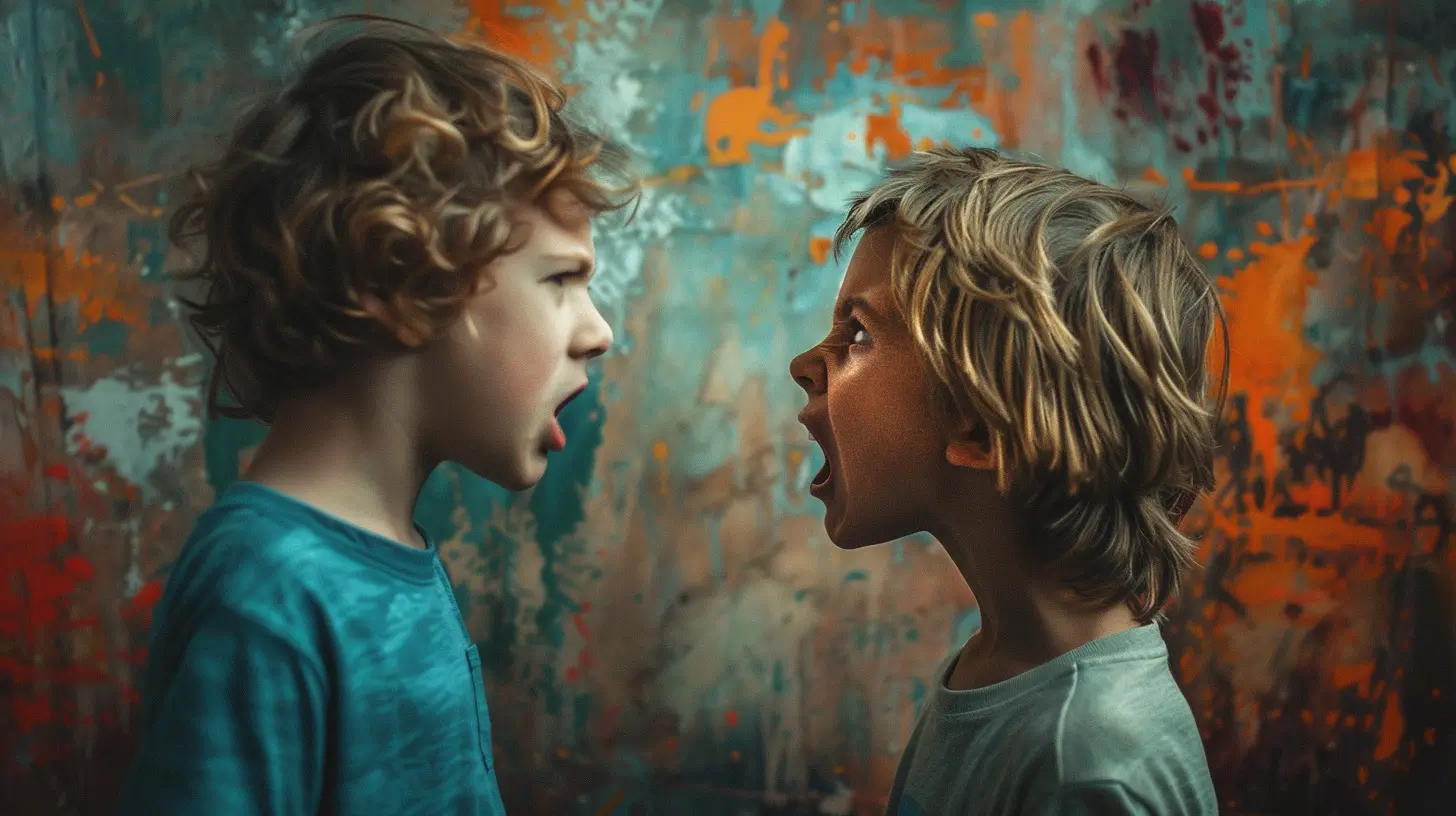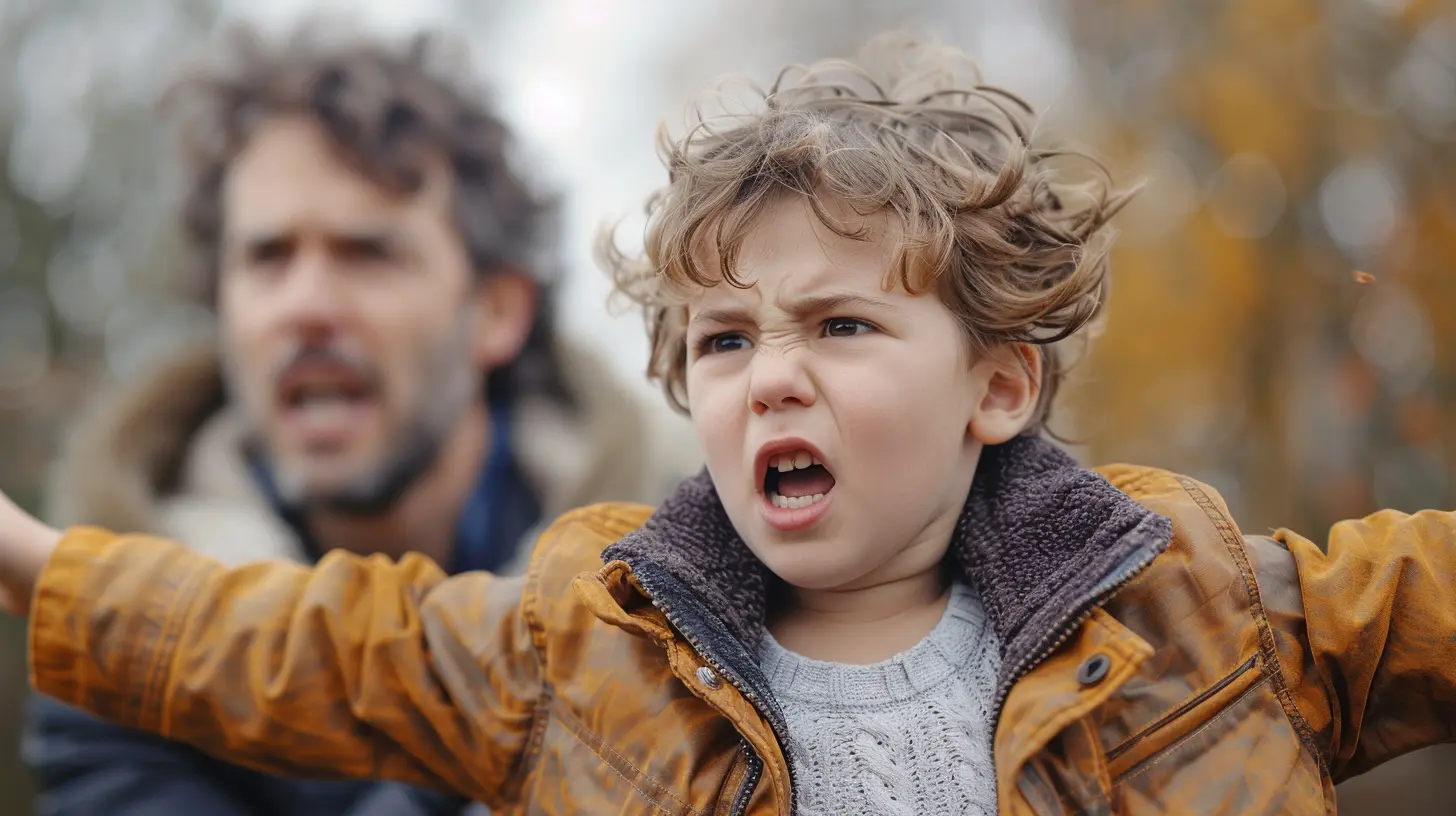Promoting Self-Regulation: Techniques for Managing Difficult Emotions
19 September 2025
Let’s face it—watching your child melt down over the wrong color cup or crumble under frustration from tying their shoes can be heartbreaking and, let’s be honest, a little exhausting. Those big feelings? They’re totally normal. The ability to manage them, though—that’s self-regulation, and it’s one of the most valuable life skills we can help our kids develop.
But here's the thing: self-regulation doesn’t come naturally to most children. In fact, it’s a skill that matures over time, and it needs a little (okay, a lot of) support from parents and caregivers. If you're navigating toddler tantrums, preschool power struggles, or even preteen emotional rollercoasters, this guide is for you.
In this post, we’ll dive into what self-regulation really means, why it’s so important, and—most importantly—simple, effective techniques you can start using today to help your child (and maybe even yourself) manage difficult emotions.
What is Self-Regulation, Really?
Self-regulation is the ability to manage one’s emotions, behavior, and body movement when faced with a tough situation. It’s what helps a child calm down after getting upset, wait their turn, or resist the urge to hit when they’re mad.Picture a house with a thermostat. When the temperature goes too high or too low, the thermostat kicks in and brings things back to balance. That’s what self-regulation does—it helps our internal “emotional thermostat” stay steady, even when life throws us curveballs.
It’s not about suppressing emotions or “being good.” It’s about recognizing feelings, expressing them in healthy ways, and bouncing back from setbacks.
Why Is Self-Regulation Important?
Let’s break it down. Self-regulation influences:- Social skills: Kids who can manage emotions tend to communicate more effectively and form stronger friendships.
- Learning: It’s tough to absorb information when you’re overwhelmed. Calm minds learn better.
- Mental health: Good self-regulation lays the foundation for resilience, reducing anxiety and emotional breakdowns.
- Decision making: Regulated kids are more likely to stop and think rather than act impulsively.
Basically, it’s like giving your child an emotional toolkit for life.
The Brain Science Behind It
Here’s a fun fact: The part of the brain responsible for self-regulation—the prefrontal cortex—doesn’t fully develop until the mid-20s. So, when your 4-year-old is sobbing because their toast broke in half, it’s not manipulation—it’s biology.Kids rely heavily on the adults around them to help co-regulate and guide them toward independence in self-regulation. That’s why our reactions matter so much.
Signs Your Child May Be Struggling to Self-Regulate
Every child has off days (don’t we all?), but here are a few signs that might suggest your little one could use extra support:- Frequent meltdowns or outbursts
- Trouble calming down after getting upset
- Acting out impulsively
- Difficulty following directions
- Becoming easily overwhelmed by sensory input (like loud noises or bright lights)
It doesn’t mean something’s “wrong.” It just means they need help building those self-regulation muscles.
1. Start with Co-Regulation
Before kids can manage feelings on their own, they need to borrow your calm.What is Co-Regulation?
It’s the process of using your calm presence to help soothe your child’s nervous system. It might look like holding them through a tantrum, validating their feelings, or simply offering a hug while they cry.Think of yourself as an emotional anchor. When they’re tossed in a sea of emotions, you’re the steady ship.
How to Co-Regulate:
- Get down to their level.- Keep your tone gentle.
- Offer empathy: “I see you’re really upset. That’s okay. I’m here with you.”
- Model slow breathing or other calming strategies.
Pro tip? You can’t fake calm. Kids know. So if you’re feeling edgy, take a moment to regulate yourself before stepping in.
2. Help Them Name Their Feelings
“Use your words” only works if they actually have the words. Teaching emotional vocabulary is a game-changer.Try This:
- Use books or stories to talk about feelings.- Label emotions when you see them: “You look frustrated that your block tower fell.”
- Keep it simple: mad, sad, scared, happy, excited, frustrated.
When kids can name what they feel, it gives the emotion less power and opens the door to healthy responses.
3. Introduce Calming Techniques
Once your child can recognize big feelings, they need tools to manage them. Think of these like their emotional “first aid kit.”Some Favorites:
- Deep breathing: The classic “smell the flower, blow out the candle” technique really works.- Counting: “Let’s count to 10 together.”
- Movement: Jumping jacks, running, or squeezing a stress ball can help release energy.
- Mindfulness: Practice stillness with a simple “listening to the sounds” game.
- Safe space: Create a cozy corner with calming toys, soft pillows, and books where they can reset.
Make these tools fun and accessible—not punishments. The goal is empowerment, not discipline.
4. Lead by Example
Kids are little mirrors. They absorb how we deal with frustration, sadness, and stress.So ask yourself—how do I respond when things don’t go my way?
If you’re calm and collected, they’ll likely pick that up. If you lose it and slam a door, chances are they will too. Nobody’s perfect, but modeling emotional control (and apologizing when we mess up) teaches more than words ever could.
5. Build Routine and Predictability
Ever notice how kids thrive when they know what’s coming?Predictable routines reduce emotional outbursts because they create a sense of security. Change is hard—especially when you’re little and still understanding the world.
Try This:
- Keep wake-ups, meals, and bedtimes consistent.- Use visual schedules for younger kids.
- Give transition warnings: “Five more minutes, then we’ll clean up.”
Knowing what to expect helps reduce anxiety and emotional overload.
6. Encourage Problem Solving
Instead of swooping in to fix everything, guide your kids to find their own solutions. This builds confidence and emotional resilience.How to Encourage It:
- Help them identify the problem.- Brainstorm together: “What can we do if your toy breaks?”
- Celebrate creative solutions—even if they’re a bit wacky.
Problem-solving is a powerful self-regulation tool that teaches kids they’re capable, even when things feel hard.
7. Use Play to Teach Emotional Skills
Kids process the world through play—it’s their language. Use it to explore emotions safely and creatively.Try These Ideas:
- Act out emotions with dolls or action figures.- Play charades with feeling faces.
- Use emotion cards in a matching game.
Play makes it easier to talk about tricky feelings without pressure or judgment. Plus, it’s just plain fun.
8. Validate, Always
Even if their reaction seems over-the-top, their feelings are real. Saying things like “You’re fine” or “That’s nothing to cry about” shuts down communication.Instead, go with:
- “I can see that you’re really upset.”
- “It’s okay to feel sad right now.”
- “That was really hard, wasn’t it?”
Validation helps children feel understood—which makes them more open to guidance.
9. Teach the Pause Button
Sometimes, the best tool is simply pausing before reacting.Teach your child to take a breath or count before reacting. It doesn’t happen overnight, but you can plant the seed.
Show them how you do it too: “Wow, I feel really frustrated. I’m going to take a deep breath before I talk.”
Kids imitate what they see.
10. Make Consequences Logical, Not Punitive
Discipline doesn’t have to mean punishment. Logical, related consequences help kids understand how their actions affect others—and help them regulate next time.Instead of:
“You’re grounded for yelling at me!”Try:
“I know you were upset, but yelling isn’t okay. Let’s take a break and try using calm words next time.”
The goal isn’t control—it’s teaching.
When to Seek Extra Support
If your child is consistently struggling despite your efforts, it might be time to call in reinforcements—and that’s okay.A child therapist, occupational therapist, or school counselor can provide tools tailored to your child’s specific needs. Early support can make a world of difference.
Final Thoughts
Helping your child regulate their emotions is not about perfection. It’s about connection, consistency, and compassion.Some days, you’ll feel like a self-regulation superhero. Other days, you might feel like you’re just surviving—and that’s okay. What matters most is showing up, offering empathy, and remembering that you’re building skills that will benefit your child for life.
So hang in there. Trust the process. And don’t forget to give yourself a little grace, too—because emotional growth isn’t just for kids.
You’ve got this.
all images in this post were generated using AI tools
Category:
Discipline TechniquesAuthor:

Maya Underwood
Discussion
rate this article
1 comments
Tamsin Elliott
Practical tips for nurturing emotional resilience in children—essential for healthy development!
September 24, 2025 at 2:30 PM

Maya Underwood
Absolutely! Fostering emotional resilience in children through self-regulation techniques helps them navigate challenges and develop healthy coping strategies for life.


